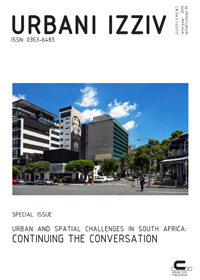 Kazalo
Kazalo
Slike
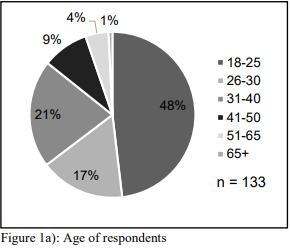
Slika 1: Age of respondents
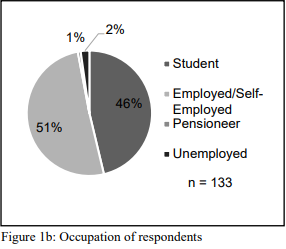
Slika 2: Occupation of respondents
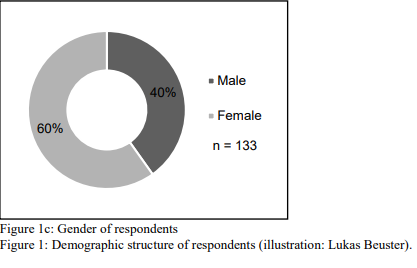
Slika 3: Gender of respondents; Demographic structure of respondents
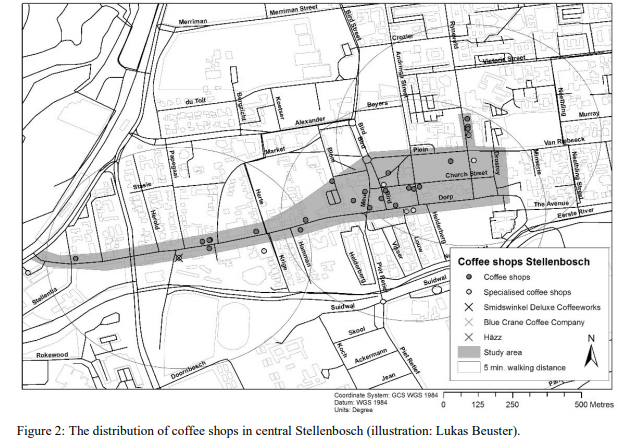
Slika 4: The distribution of coffee shops in central Stellenbosch (illustration: Lukas Beuster)
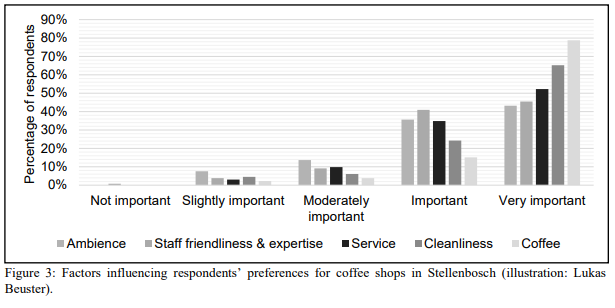
Slika 5: Factors influencing respondents’ preferences for coffee shops in Stellenbosch (illustration: Lukas Beuster).
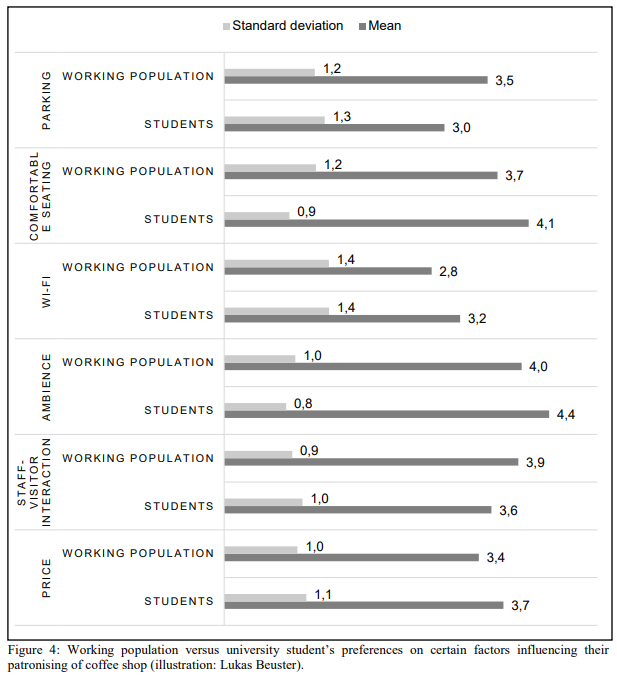
Slika 6: Working population versus university student’s preferences on certain factors influencing their patronising of coffee shop (illustration: Lukas Beuster)
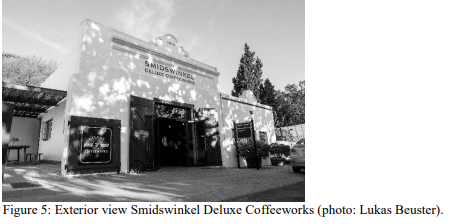
Slika 7: Exterior view Smidswinkel Deluxe Coffeeworks (photo: Lukas Beuster)
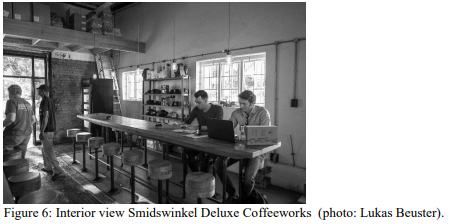
Slika 8: Interior view Smidswinkel Deluxe Coffeeworks (photo: Lukas Beuster)
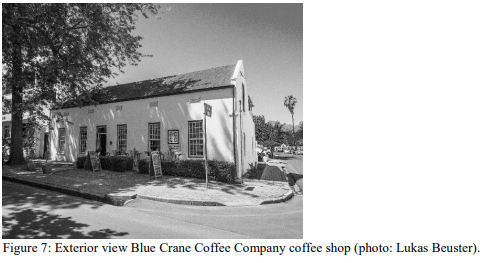
Slika 9: Exterior view Blue Crane Coffee Company coffee shop (photo: Lukas Beuster)

Slika 10: Interior view Blue Crane Coffee Company coffee shop (photo: Lukas Beuster)
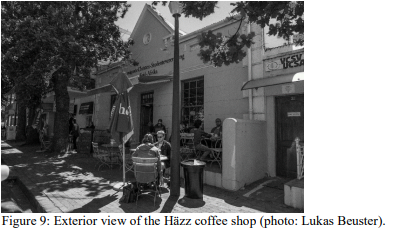
Slika 11: Exterior view of the Häzz coffee shop (photo: Lukas Beuster)
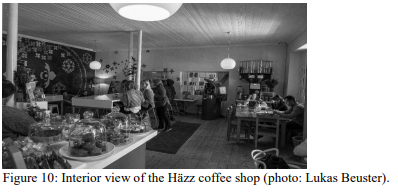
Slika 12: Interior view of the Häzz coffee shop (photo: Lukas Beuster)
Urbani izziv Leto 30, št. supplement, februar 2019
: 64-81
(Članki)
doi: 10.5379/urbani-izziv-en-2019-30-supplement-005
Avtor
Sanette FERREIRA
Department of Geography and Environmental Studies, Stellenbosch University, South Africa
slaf@sun.ac.za
Lukas BEUSTER
Department of Geography and Environmental Studies, Stellenbosch University, South Africa
21376042@sun.ac.za
Naslov članka
Stellenbosch coffee society: Societal and locational
preferences
Povzetek
Stellenbosch is a university town boasting knowledge-intensive economic sectors with a variety of ‘new
economy’ occupations and activities. The presence of a professional and creative class, as well as university
students has changed the economy, the retail landscape and the social spaces of the town. This paper reports on
an investigation of the geography of coffee shops (third places) in downtown Stellenbosch and describes the
social and physical factors which influence customer preferences for certain coffee shops. A brief review of the
literature on the evolution of coffee shop and café cultures, the functioning as third places and the siting of
coffee shops in inner cities (or specific neighbourhoods) is presented. A mixed-methods research approach
consisting of transect walks, a questionnaire survey and three in-depth-interviews with coffee shop owners (or
managers) is explained. The study area in the historical precinct of the town is contextualised. The bigger
picture of coffee consumption in Stellenbosch – social and locational preferences, place attachments of
consumers and the relative location of coffee shops – is sketched. The findings of three in-depth case studies
(selected speciality coffee shops) are discussed. The paper concludes by pointing out some implications for the
planning of consumption spaces in secondary cities in developing world contexts.
Ključne besede
coffee shops, third places, new economy, locational preferences, place attachment